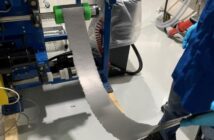Lithium-ion batteries are so common nowadays we sometimes wonder whether hardware stores sell batteries with free power tools. Pretty much the same is true in cell phone, and computer stores because they can cost as much it seems. Of course, that’s all tongue in cheek but it’s an interesting thought! Today we decided to share more information about how lithium-ion batteries do their work.
Let’s Find Out How Lithium-Ion Batteries Fit Together

All commercial electric batteries follow the same principle. Whether you want to know what makes lead-acid batteries tick, or how lithium-ion batteries work, our answer will be similar.
They all comprise four constituents. They are the cathode, the electrode, the ions that travel between them, and the electrolyte that is the ion ‘superhighway’. Oops! We almost forgot the battery case that prevents the bits from falling apart.
Lithium-Ion Battery Parts
The cathode is the negative terminal and it is usually carbon-based. The positive one or anode comprises a metal oxide for example cobalt oxide, or manganese oxide. Both electrodes have a layered structure allowing other electrons to creep in. If you own a cat, think about how it snuggles between the blankets.

The electrolyte can be made of almost anything, and it could be liquid, semi-liquid, or solid. In all cases it contains lithium ions, which is, incidentally how lithium-ion batteries got their name.
When we charge them with electricity, this excites the lithium ions and causes them to gather around the cathode. Then they slip between the carbon layers waiting for their call to action in a process we call intercalation.
The Lithium-Ion Battery Answer
Things start to happen when we connect a lithium-ion battery to a device and turn it on. The lithium ions move from the cathode to the anode through the electrolyte as the battery gradually discharges. Since lithium-ion batteries are rechargeable, we can recycle the process many times. That is, in a tiny nutshell, how lithium batteries really work.
Related
Battery Intercalation & How It Works
Preview Image: Canon LP-E6 and 5D Mark III




